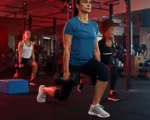Grip strength might seem like a mundane aspect of physical fitness, but research has revealed that it could hold the key to predicting your overall health and even your ability to lead a long life. Beyond opening jars or carrying groceries, grip strength has emerged as a surprisingly reliable indicator of longevity, metabolic health, and resilience to diseases.
Here’s how this simple test can illuminate your health status and what you can do to improve it.
Why Grip Strength Matters
At its core, grip strength measures the force generated by the muscles in your hand and forearm. While on the surface, it may not seem highly consequential, grip strength has been found to reflect more profound aspects of physical and metabolic health.
A Remarkable Predictor of Longevity
One breakthrough study conducted across 17 countries with 140,000 participants found that grip strength is a stronger predictor of premature death than blood pressure. Researchers discovered that lower grip strength was linked to heightened risks of heart disease, stroke, and early mortality.
Another long-term study followed individuals from 1965 to 2012. It revealed that participants with grip strength in the top third had a 2.5 times higher likelihood of living past 100 compared to those in the lowest third.
What’s the connection? Grip strength serves as a proxy for overall muscle health. Stronger muscles and better physical fitness suggest that your body is better equipped to combat illnesses, recover from injuries, and maintain overall physiological resilience.
More than Muscle
Interestingly, grip strength isn’t just about physical capability. Researchers have linked weak grip strength to metabolic dysfunction, which can manifest as type 2 diabetes, obesity, and even cognitive decline. Muscle acts as a reservoir to absorb blood glucose, and weaker muscles often indicate diminished metabolic effectiveness.
Additionally, diminished grip strength has been tied to mental health challenges, such as depression, indicating broader implications across physical and emotional well-being.
Testing Your Grip Strength
The good news? Checking your grip strength is simple and accessible to everyone.
- At Home: If you don’t have access to a hand dynamometer (the gold standard device that measures force), a tennis ball or stress ball works well. Squeeze it as hard as you can for 15–30 seconds. Noting how long you can hold the squeeze and tracking improvements over time can offer a glimpse into your muscle endurance.
- Clinic or Gym: Most gyms and clinics have dynamometers available. For men, a grip strength below 25.5 kilograms may put you at higher risk of a condition called sarcopenia (muscle loss), while for women, the threshold is 18 kilograms.
Want an alternative approach? A simple handshake can also offer insight. Weak handshakes and emaciated hand muscles may signal muscle deterioration or the risk of frailty.
Seeing Where You Stand
Age, lifestyle, and activity levels all impact grip strength. Check out benchmark studies to compare your strength to that of people in your age group and gender.
The Science Behind Grip Strength and Longevity
Grip strength enters the longevity picture because it reflects a larger health story.
- Resilience to Disease
Studies show that grip strength is a marker of resilience, underlying whether someone can fight off infections like pneumonia or recover from chronic illnesses such as cancer.
- Muscle’s Role in Metabolism
Muscle strength is integral to maintaining blood sugar levels and metabolic health. Weaker muscles decrease insulin sensitivity, opening the door to diabetes and related complications.
- Ageing and DNA Impact
Research has revealed that individuals with low grip strength often display accelerated aging through DNA methylation patterns. Simply put, grip strength can provide clues into how well your body is aging on a cellular level.
- Frailty and Falls
Low grip strength often correlates with frailty in older adults, increasing the risk of falls, fractures, and prolonged recovery times.
How to Improve Your Grip Strength
The fascinating thing about grip strength is that it’s never too late to make improvements. Whether you’re in your 20s or your 70s, small, consistent actions can make a meaningful difference.
Work the Hands and Forearms
- Wrist Curls: Hold a lightweight can with your palm facing upward. Curl your wrist upward toward your body for a set of 10–20 reps.
- Tennis or Stress Ball: Squeeze a ball regularly to strengthen your hands and forearms. Start small and build duration over time.
Full-Body Activity is Key
Grip strength improves as overall physical activity increases. Incorporate general resistance training, such as squats, deadlifts, and pull-ups, to train muscle groups throughout your body. Studies have shown that improvements in overall fitness lead to significant gains in grip strength.
Consistency is Critical
Older adults in particular should focus on regularity. Integrating simple tests like the “get-up-and-go” method (sitting, walking a few meters, and sitting again) can improve mobility, lower-limb strength, and overall fitness.
Lifestyle Shifts
Muscular health is intricately tied to nutrition. Adequate protein intake is essential to support muscle mass. Likewise, staying hydrated and incorporating foods rich in vitamins D and C contributes to healthier muscles over time.
Grip Strength as Part of a Bigger Picture
While grip strength isn’t the sole determinant of your chances of living to 100, it’s a highly indicative piece of the broader health puzzle. Improvements to grip strength will ripple across muscular fitness, metabolic health, and daily functionality, helping you age more gracefully and resiliently.
No matter your starting point, small steps taken today can have profound impacts on your future. Whether it’s picking up a tennis ball, joining a fitness class, or prioritizing nutritional balance, building strength is truly within reach.
Start simple, stay consistent, and watch as your grip on life grows stronger with every squeeze.








